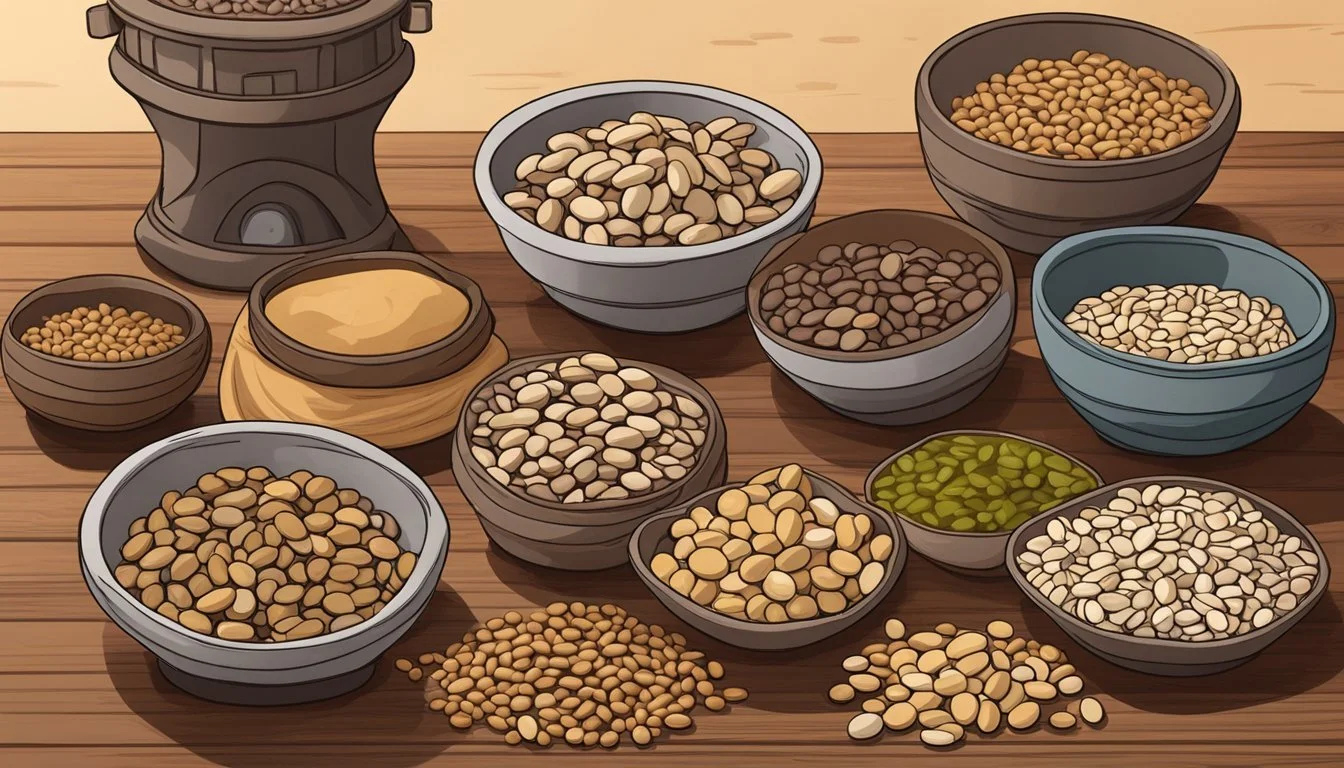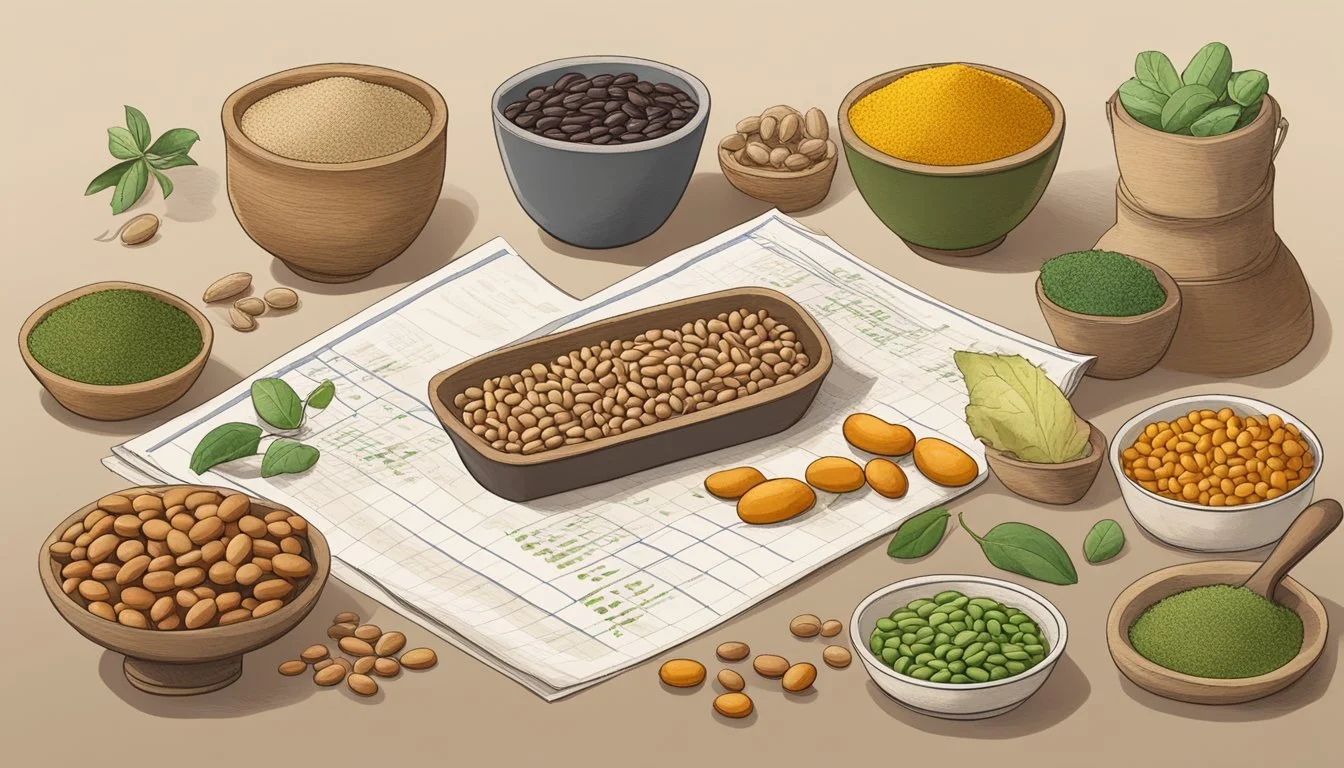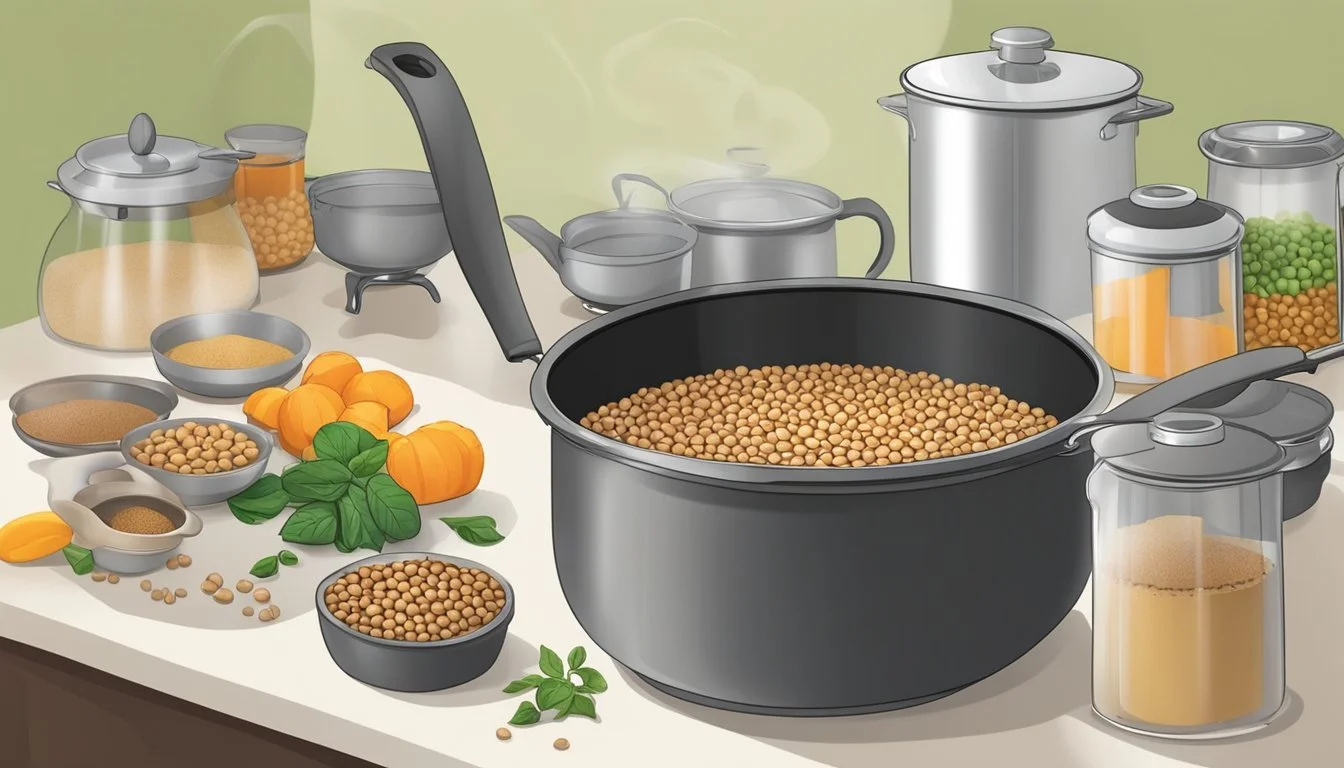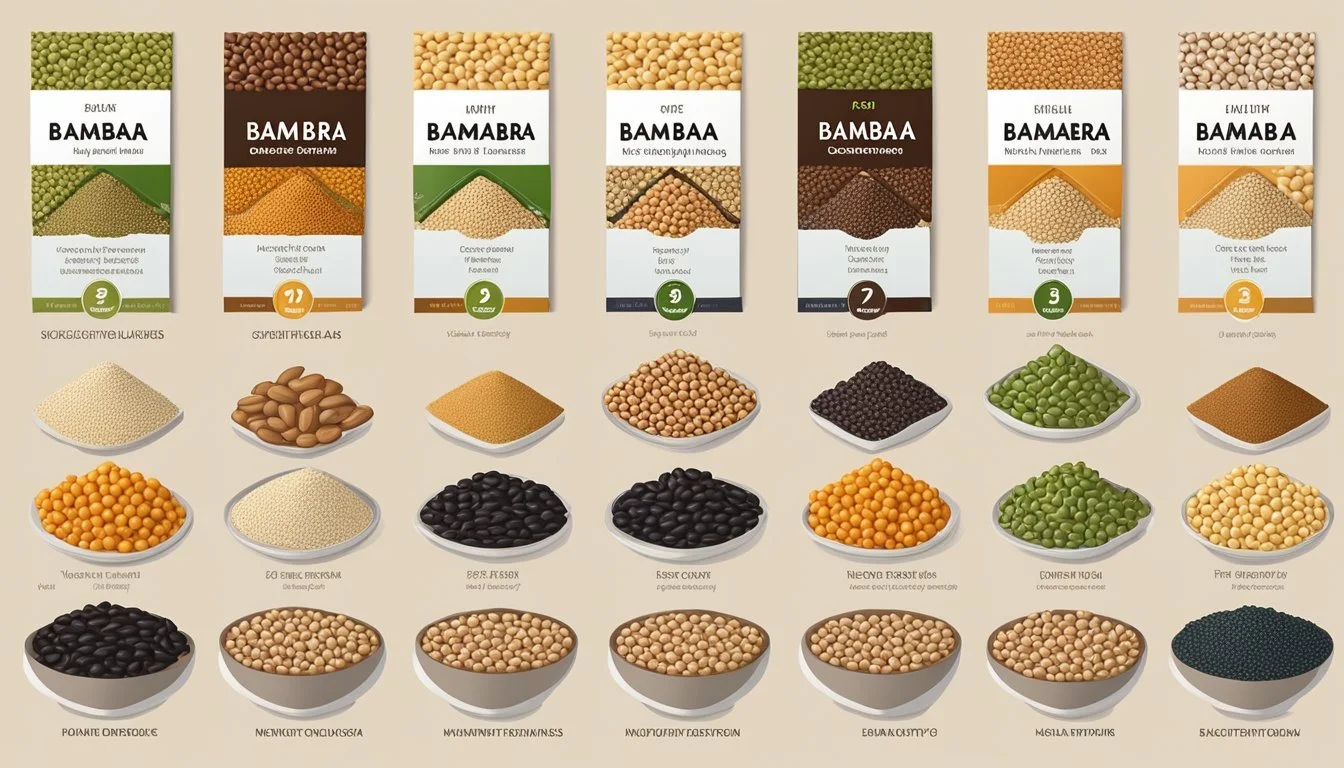Bambara Beans Substitutes
Best Alternatives for Cooking
Bambara beans are a lesser-known yet nutritious legume that has been a staple in African cuisine for centuries. They thrive in warm climates and provide a significant source of plant-based protein, making them an excellent choice for vegetarian and vegan diets. Despite their numerous benefits, these beans can sometimes be hard to find in certain regions. One suitable substitute for Bambara beans is chickpeas, also known as garbanzo beans, which share a similar taste and texture.
Chickpeas are not only versatile but also pack a punch in terms of nutrition, offering protein, fiber, and various essential vitamins. They can seamlessly replace Bambara beans in a variety of dishes, from stews to salads and even in making hummus. This versatility ensures that you won't miss out on the nutritional benefits Bambara beans provide, even if you need to make a substitute.
Other potential substitutes include black beans and cowpeas, both of which are nutritious legumes commonly used in many cuisines. These alternatives can also be easily incorporated into numerous recipes, offering a wealth of protein and dietary benefits.
Understanding Bambara Beans
Bambara beans, also known as Bambara groundnuts, are legumes that are valued for their nutritional benefits, versatility in cooking, and cultural importance in various regions, especially in West Africa.
Nutritional Profile
Bambara beans are packed with essential nutrients. They are rich in protein and fiber, making them an excellent choice for plant-based diets. Additionally, they contain various minerals such as iron, potassium, and calcium, which contribute to overall health.
Vitamins found in Bambara beans help support the immune system and metabolic functions. The high fiber content aids digestion and promotes gut health. Due to these properties, Bambara beans are a nutritional powerhouse, often used to combat malnutrition in regions where they are cultivated.
Culinary Uses
Bambara beans can be used in a variety of dishes. They are commonly added to stews, soups, and salads, which highlights their versatility. In Ghanaian cuisine, for example, Bambara beans are used to prepare a local snack called tatale, which is a type of pancake.
These beans are often incorporated into breakfast dishes and even served as a snack. When dried and ground into flour, Bambara beans can be used to bake bread and other baked goods, although their inclusion in dough can affect the texture. Their adaptability in various recipes makes them a staple in many households.
Cultural Significance
In West Africa, particularly in countries like Ghana, Bambara beans have significant cultural importance. They are traditionally grown by subsistence farmers and are a staple food for many communities. The beans are not only a source of nourishment but also part of the cultural heritage.
Bambara beans are deeply rooted in local traditions and are often included in ceremonial dishes. They also contribute to the food security of the region, providing a reliable source of nutrition and promoting agricultural sustainability. Their role in the diet and culture underscores their importance beyond mere dietary value.
Substitute Considerations
When choosing a substitute for Bambara beans, it's crucial to consider how texture, flavor, and the spices in your recipe will interact with alternative ingredients.
Flavor Profile Matching
Selecting a substitute with a similar flavor profile ensures the final dish remains delicious. Chickpeas are a popular choice due to their comparable taste and texture. They work well with spices like cumin, coriander, and paprika.
Other options include pinto beans and black-eyed peas. Their mild flavors can be enhanced with garlic, onions, and chili powder. Adjust seasoning levels of salt and pepper to achieve the desired taste. This careful attention to flavor will help maintain the integrity of your recipes.
Bambara Beans Substitutes
When substituting Bambara beans, it's important to find alternatives that match their texture, taste, and nutritional benefits. Here are several choices, each offering unique characteristics suited to different dishes.
Red Beans
Red beans are an excellent substitute for Bambara beans due to their similar texture and appearance. They are packed with protein and fiber, making them a nutritious option for vegetarian and vegan dishes.
These legumes are commonly used in cuisines like Caribbean and Creole cooking. Their robust flavor holds up well in stews and soups. Red beans can easily replace Bambara beans in recipes, providing a hearty and fulfilling meal.
Chickpeas and Garbanzo Beans
Chickpeas, also known as garbanzo beans, are another versatile substitute. They have a mildly nutty taste and a firm texture. These legumes are rich in protein and serve as a meat alternative in vegan diets.
They can be used in various dishes, including salads, stews, and hummus. Chickpeas are convenient since they are readily available in both dried and canned forms, making them easy to incorporate into your cooking routine as a replacement for Bambara beans.
Black-Eyed Peas
Black-eyed peas are commonly used in African cuisine and have a similar earthy flavor and creamy texture to Bambara beans. They are known for their high protein and fiber content.
These peas are especially popular in Southern American cooking and can be used in dishes like Hoppin' John or added to soups and stews. Their adaptability makes them a strong contender for replacing Bambara beans in many recipes.
Kidney Beans
Kidney beans are another suitable substitute. Known for their distinct kidney shape and deep red color, they are commonly used in chili and other hearty dishes. These legumes are high in protein and fiber, making them filling and nutritious.
Kidney beans hold their shape well during cooking, making them ideal for recipes requiring long simmering times. Their robust flavor complements a variety of spices and ingredients, offering a flavorful alternative to Bambara beans.
Pinto Beans
Pinto beans are a staple in Mexican cuisine and can replace Bambara beans in many dishes. They have a creamy texture and a mild, earthy flavor. These legumes are rich in protein and fiber, suitable for hearty meals.
Often used in refried beans and burritos, pinto beans can also be used in soups, stews, and salads. They are versatile and readily available, making them a convenient substitute for Bambara beans in a wide range of recipes.
Cannellini Beans
Cannellini beans, also called white kidney beans, are popular in Italian dishes. They have a slightly nutty flavor and a creamy texture. These legumes are high in protein and low in fat, fitting well into various dietary plans.
Cannellini beans are excellent in soups, stews, and salads. They can replace Bambara beans in many recipes, providing a smooth texture and subtle flavor that complements a variety of ingredients.
Lima and Butter Beans
Lima beans, also known as butter beans, have a creamy texture and a mild flavor. They are a good source of protein and a versatile legume in cooking. Lima beans can be used in soups, stews, and salads.
They are especially nice in dishes that benefit from their smooth, buttery consistency. As a substitute for Bambara beans, lima beans bring a different texture but still maintain a nutritious profile, making them a viable alternative in many recipes.
Alternative Ingredients Beyond Legumes
Substituting bambara beans involves exploring various ingredients that offer unique textures, flavors, and nutritional benefits. Nuts, seeds, grains, and vegetables can provide excellent alternatives in different culinary contexts.
Nuts and Seeds
Nuts and seeds are great substitutes, adding both texture and flavor. Peanuts, often used in West African cuisine, mimic the creamy consistency of bambara beans when ground. Sunflower seeds and pumpkin seeds are versatile, with a nutty taste and high protein content. They can be roasted or blended into sauces. Almonds and cashews are ideal for creamy dishes, offering a rich mouthfeel and mild flavor, making them suitable for vegan recipes.
Grains
Grains provide a starchy element that can replace bambara beans in various dishes. Quinoa stands out with its high protein and fiber content, along with its quick cook time of around 15 minutes. Sorghum, another gluten-free option, has a chewy texture and works well in salads or as a side dish. Buckwheat groats, despite the name, are gluten-free and add a hearty, nutty flavor.
Vegetables
Using vegetables like plantains and sweet potatoes can create delicious, textured alternatives. Plantains, especially when cooked, have a starchy consistency similar to legumes and can be mashed or fried. Sweet potatoes offer a sweet, earthy flavor and work well in stews and mashes. Green peas, either fresh or frozen, have a mild taste and a tender texture, making them a quick-cooking ingredient that complements a variety of dishes.
Cooking Tips for Substitutes
When substituting Bambara beans, it’s important to choose alternatives that match their texture and flavor profile. Here are some tips to ensure successful incorporation of substitutes into your recipes.
Preparation and Cooking Techniques
Chickpeas, also known as garbanzo beans, make an excellent substitute for Bambara beans due to their similar texture. It's best to soak chickpeas overnight to reduce prep time. Cooking these beans in a pressure cooker can significantly cut down the cook time.
When using lima beans, they should be soaked for at least 8 hours before cooking. Boiling them until tender is recommended. Alternatively, canned lima beans can reduce the overall prep time.
Pureed beans, such as white beans or navy beans, can be used to maintain the creamy texture in stews or soups. Blending the beans before adding them to the dish ensures even distribution.
Seasoning and Spices
Flavor balance is crucial when substituting. Chickpeas benefit from a mix of cumin, coriander, and paprika, which complements their nutty flavor. When using them in stews or soups, adding garlic and lemon juice can enhance the overall taste.
For lima beans, a combination of thyme, bay leaves, and salt works well. These spices help to enhance the inherent earthiness of the beans. Adding a dash of olive oil while cooking can improve their texture.
When using pureed beans, it’s essential to adjust the seasoning. Since they tend to be bland, incorporating extra salt, pepper, and spices like turmeric or smoked paprika ensures the dish remains flavorful.
Integrating Substitutes into Recipes
When substituting Bambara beans in recipes, important considerations include adapting the recipe for flavor alignment and adjusting the texture and consistency to maintain the dish’s intended quality.
Recipe Adaptation
To adapt a recipe that originally uses Bambara beans, choose substitutes like chickpeas, cannellini beans, or black beans. Chickpeas are a versatile option, offering a similar texture and taste. They work well in stews, curries, and even as a base for hummus.
In Mediterranean dishes, cannellini beans can be used, providing a creamy texture and mild flavor. For an earthier taste, black beans are suitable, especially in Latin-inspired recipes. Personal preference and the dish’s flavor profile can guide the choice of bean substitute.
Texture and Consistency Adjustments
Texture and consistency are critical factors when integrating substitutes. For stews and curries, chickpeas maintain a firm texture after cooking, while cannellini beans add a creamy consistency to soups and purees. Black beans, which are firmer, may require longer cooking times to achieve the desired softness.
Note the specific cooking times for the chosen substitute. Chickpeas and cannellini beans typically require soaking and prolonged cooking, while black beans might need pre-cooking to match the tender texture of Bambara beans. Adjust the liquid quantities in the recipe to ensure the consistency remains appropriate for the dish.
Incorporating these substitutions thoughtfully can maintain or even enhance the overall quality and enjoyment of the dish.
Health and Dietary Considerations
When choosing substitutes for Bambara beans, understanding their nutritional benefits and dietary suitability is essential. Ensuring that alternatives meet similar health and dietary needs is crucial for maintaining a balanced diet.
Meeting Nutritional Needs
Bambara beans are rich in protein and dietary fiber. They contain essential amino acids like isoleucine, leucine, and lysine. Substitutes like chickpeas and lentils provide comparable protein content. Chickpeas, for instance, offer 19 grams of protein per 100 grams.
Lentils are another option, with around 9 grams of protein per 100 grams. These legumes also supply significant fiber, promoting digestive health. Vitamin B components, such as thiamine and folate, are present in Bambara beans and their substitutes, contributing to energy metabolism and red blood cell formation.
Gluten-Free and Allergy-Friendly Options
For individuals with gluten allergies, selecting gluten-free substitutes is vital. Chickpeas and lentils are naturally gluten-free, making them suitable for gluten-sensitive individuals. They minimize the risk of allergic reactions commonly associated with gluten-containing foods.
These legumes also cater to those with specific dietary restrictions, ensuring a nutritious and balanced diet without compromising on protein intake. Their versatility allows incorporation into various dishes, maintaining dietary diversity while adhering to gluten-free needs. Such careful selection ensures that health and dietary considerations are appropriately met.
Resources and Further Reading
For those interested in exploring substitutes for Bambara beans, a variety of resources offer valuable insights into culinary applications, nutritional information, and academic research.
Culinary Experts and Cookbooks
Culinary experts and established cookbooks can be excellent resources for discovering alternatives to Bambara beans. Chickpeas (garbanzo beans) are often recommended by chefs for their similar texture and taste. Noted cookbook authors like Yotam Ottolenghi and Deborah Madison feature recipes that utilize chickpeas in diverse dishes such as stews and salads.
Food bloggers and Instagram influencers, such as Minimalist Baker and Smitten Kitchen, frequently showcase chickpea recipes, including creative takes on classic dishes. These platforms often include high-quality food photography, making it easier to visualize the final dish. Engaging with these resources can help home cooks find practical and delicious substitutes for Bambara beans.
Academic Studies and Nutritional Information
Academic studies provide a wealth of knowledge regarding the nutritional benefits of Bambara bean substitutes. Chickpeas, for instance, are highlighted in numerous research papers for their high protein and fiber content. According to a study published by FAOSTAT, chickpeas contain approximately 19 grams of protein and 12 grams of fiber per 100 grams, making them a highly nutritious substitution.
Further research into Bambara groundnut (Vigna subterranea) reveals that it contains around 23.6% protein and is rich in essential minerals. Institutions like the University of Ghana and Springer have conducted detailed research on these beans, focusing on their cultivation, nutritional profiles, and economic impact. These studies are crucial for understanding the broader implications of using chickpeas as a substitute.








